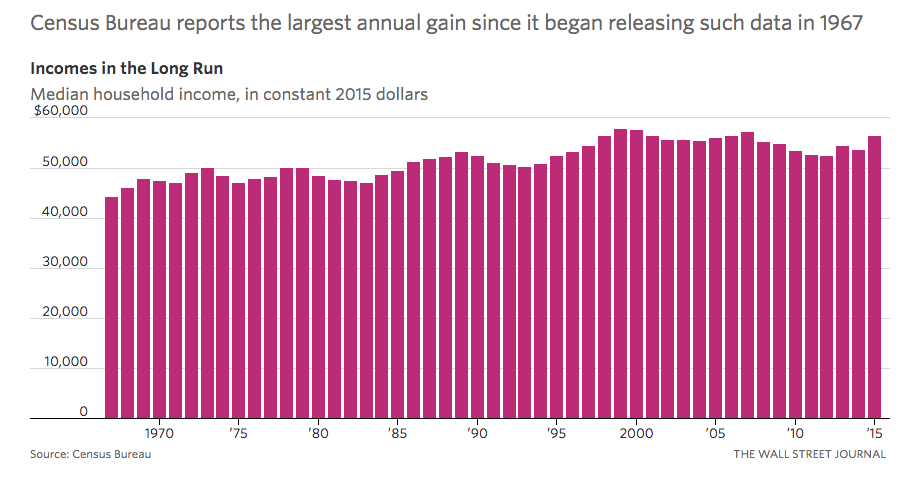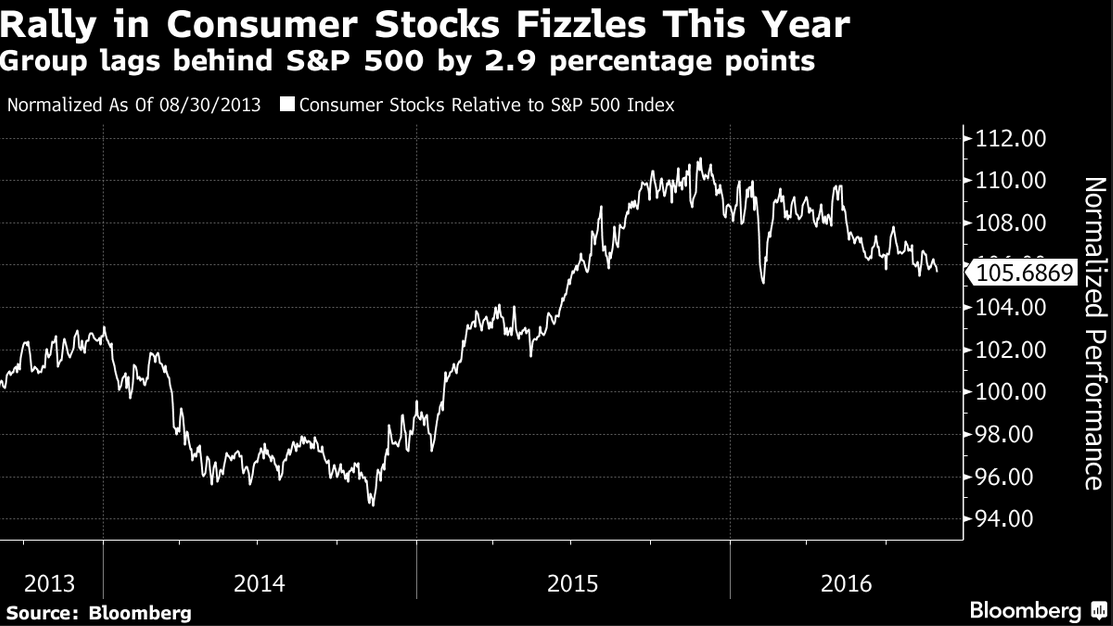At long last, US households seem to be catching a break after a nearly decade-long long stretch of wage stagnation.
The Census Bureau surprised many investors this week when it reported that US median income in 2105 surged 5.2%, or $2,798, to $56,516, from a year earlier, after adjusting for inflation.

That’s the biggest annual gain in median income (the level at which half are above and half are below) since the Census Bureau started tracking this data back in 1967.

Lowest Rung
What’s more, as the Wall Street Journal noted:
“At the current pace, median household incomes could surpass their 2007 level next year, according to forecasts by IHS, concluding a lost decade for workers.”
On top of that, the poverty rate in 2015 declined to 13.5% from 14.8% the year before. The poverty threshold for a family of four is $24,257.
Improved Mood
In August, consumer confidence hit its highest mark in more than a year.
Consumer spending, meanwhile, has risen for four consecutive months, powered by a strong jobs market, cheap gas and low interest rates.
Consumer spending accounts for more than 70% of US output, so it’s critical to the outlook in the second half of the year.
Consumer Stocks
On the flip side, consumer-focused stocks haven’t yet pulled out of their slump this year, even as American consumers show signs of financial strength.

Takeaway
In my opinion, US households finally seem to be on track to regain lost ground on wages since the financial crisis.
Wage growth is robust and the jobs market looks strong.
It’s been a long slog, but I think things are finally looking up for American consumers.
Photo Credit: Cristy and Roanish via Flickr Creative Commons




